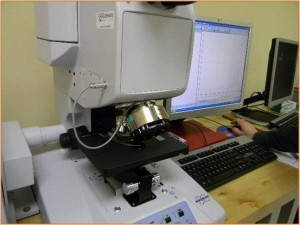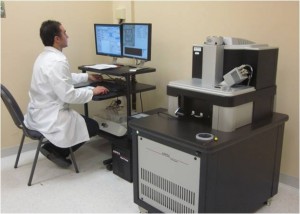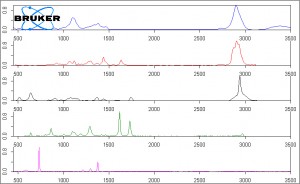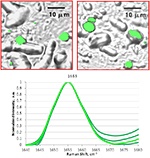On August 6th, Cara Plese, M.S., Scientist I and Antonio Scatena, Laboratory Manager at Gateway Analytical hosted a webinar designed for police and attorneys on the topic of condom lubricant analysis. During this webinar, our presenters provided an in depth explanation of the analysis of condom lubricants and gave insight into many of the variables that can influence the results of a test, including appropriate collection time, the location of sampling, and the type of condom used in an assault. The presenters focused on the results of condom lubricant analysis and discuss what can be determined once a sample has been tested.
Q&A Recap for What Police & Attorneys Need to Know about Condom Lubricant Analysis
[fa icon="calendar'] Aug 9, 2013 6:00:37 AM / by Admin posted in Blog, condom lubricant analysis, forensic analysis, Forensics, FTIR, PDMS, trace evidence, trace evidence analysis
Scientific Working Groups: Helping the Field of Forensic Science Advance for over 20 Years
[fa icon="calendar'] Aug 8, 2013 9:00:25 AM / by Cara Plese posted in Blog, Forensics, National Institute of Justice, Scientific Working Groups, SWG, SWGDAM, SWGDRUG, SWGFAST, SWGMAT
Scientific Working Groups, or SWGs for short, are groups of leading professionals from various fields in forensic science who work together for advancement in their area of science. Most SWGs are largely funded by the National Institute of Justice (NIJ) with the purpose of proposing guidelines regarding the use of testing standards, reporting suggestions, and recommended standard practices for both new and traditional technologies. Even though the SWGs cannot enforce the use of these guidelines, they provide suggestions which are reached as the consensus of professionals from various agencies, and can be used by laboratories at federal, state, and local levels.
What Police and Attorneys Need to Know about Condom Lubricant Analysis
[fa icon="calendar'] Aug 6, 2013 9:40:58 AM / by Admin posted in Blog, condom lubricant analysis, forensic analysis, Forensics, Forensic Webinar Recordings, trace evidence, trace evidence analysis
Now What?: After the Accreditation Celebration
[fa icon="calendar'] Jul 25, 2013 10:00:13 AM / by Admin posted in accreditation, Blog, continual quality improvement, ISO 17025, ISO 9001, Quality Assurance, Quality Corner, quality management system
The day the certificate arrives in the mail, it finally sinks in – all that hard work, extra time in the office, hours spent preparing has finally paid off! As you adjust to the idea that the fruits of your labor have finally (FINALLY!) been recognized, another realization begins to come to light. Along with the satisfaction of hanging your accreditation certificate on the wall, you've also come to the realization that the journey has just begun. As with any complex and detailed structure, your newly accredited quality management system is going to need continued TLC to guarantee its success.
Featured Application: Micro-FTIR Spectroscopy
[fa icon="calendar'] Jul 22, 2013 9:00:17 AM / by Rebekah Byrne posted in Blog, chemical identification, Fourier transform infrared spectroscopy, Materials Science, Micro-FTIR, Optical Microscopy, Raman, sem-eds
Fourier transform infrared spectroscopy, or FTIR, is a vibrational spectroscopy method which is based upon the measurement of specific frequencies which occur between chemical bonds in a given material. Interestingly, as materials may be unique in chemical nature, so are the infrared spectra which they yield, resulting in a unique “fingerprint” for a given material. As such, this makes FTIR a very resourceful tool for such things as:
Q&A Recap for Identify Agglomerates by their Chemical Makeup using Raman Chemical Imaging
[fa icon="calendar'] Jul 15, 2013 3:46:32 PM / by Admin posted in Blog, Pharmaceutical
On July 10th, Oksana Olkhovyk, Ph.D., Senior Scientist at Gateway Analytical hosted a webinar designed for scientists working to develop various pharmaceutical drug products. During this webinar, we discussed how Raman Chemical Imaging (RCI) is an effective tool that can be used to identify agglomerates by their chemical makeup in various drug formulations, and how it can benefit developers of OINDPs such as nasal spray suspensions, dry powder inhalers (DPIs), metered dosed inhalers (MDIs), as well as semi-solids: topical creams, emulsions and gels. We also discussed the validation of the RCI method to objectively and precisely evaluate the extent and size of drug to drug or drug to excipient aggregates and compare it to other methods for identifying agglomerates including, optical microscopy, Anderson Cascade Impaction, Raman Microscopy and Confocal Spectroscopy.
Featured Application: Automated SEM-EDS Materials Analysis: Getting the Big Picture
[fa icon="calendar'] Jul 10, 2013 6:00:00 AM / by Rebekah Byrne posted in Automated SEM-EDS, Blog, failure analysis, materials analysis, product development, reverse engineering, Scanning Electron Microscopy â Energy Dispersive S
This function has a great deal of utility when performing materials analysis, whether the goal is product development, failure analysis, or reverse engineering. Manual analysis certainly has its advantages when a quick, general overview of a sample is effective. However sometimes the end goal of an examination requires a bigger picture of the sample, and automated SEM-EDS analysis can provide a solution.
Setting the Right Quality Objectives to Help Drive Your Organization's Success
[fa icon="calendar'] Jun 21, 2013 10:00:02 AM / by Tricia Wood posted in Blog, customer satisfaction, Quality Assurance, Quality Corner, quality management system, Quality Objectives
ISO 9001:2008 clause 5.4.1 requires top management to establish quality objectives. The objectives selected must be measurable and consistent with the quality policy. The real sign of a high quality objective is its alignment with the overall goals of the organization. Keep in mind that the manner in which quality objectives are selected and monitored can greatly impact an organization’s success.
Featured Application: Fiber Analysis and Discrimination Using Raman Spectroscopy
[fa icon="calendar'] Jun 17, 2013 1:00:38 PM / by Rebekah Byrne posted in Blog, Fiber analysis, Materials Science, Raman spectroscopy, vibrational spectroscopy
Identify Agglomerates by their Chemical Makeup using Raman Chemical Imaging
[fa icon="calendar'] Jun 13, 2013 9:13:44 AM / by Admin posted in Agglomerates, Blog, Dry Powder Inhalers, metered dosed inhalers, nasal spray suspensions, OINDPs, Orally Inhaled and Nasal Drug Products, Pharmaceutical, Pharmaceutical Webinars, Raman chemical imaging, Recorded Webinars
Original Event Date: Wednesday, July 10, 2013
Duration: 60 minutes
Presenters: Oksana Olkhovyk, Ph.D., Senior Scientist at Gateway Analytical
Host: Shawn Wilhelm, Marketing Coordinator at Gateway Analytical







